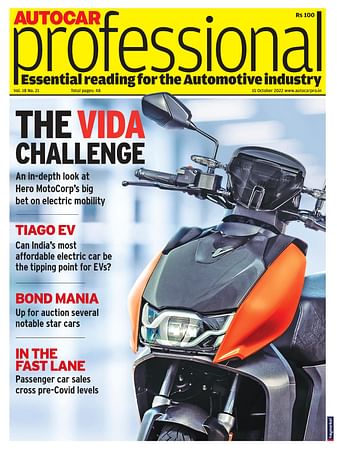Mahle develops magnet-free electric motor
High overall efficiency of 95%, previously only achieved by Formula E racing cars; wear-free thanks to inductive power transmission
Mahle has announced development of a new kind of magnet-free electric motor that does not require rare earth elements. This not only makes production more environmentally compatible, but also brings advantages in terms of costs and resource security.
The central feature of the new motor is the inductive and thus contactless power transmission, which allows the motor to operate wear-free and particularly efficiently at high speeds. The efficiency is above 95% at almost all operating points — a level that previously has only been achieved by Formula E racing cars.
Mahle says it has succeeded in combining the strengths of various electric motor concepts in one product. This new development is easily scalable, so it can be used in anything from subcompacts through commercial vehicles.
According to Michael Frick, Chairman of the MAHLE Management Board (ad interim) and CFO, “Dispensing with magnets and therefore the use of rare earth elements offers great potential not only from a geopolitical perspective but also with regard to the responsible use of nature and resources.”
“Our magnet-free motor can certainly be described as a breakthrough, because it provides several advantages that have not yet been combined in a product of this type,” says Dr. Martin Berger, Vice President Corporate Research and Advanced Engineering at Mahle. “As a result, we can offer our customers a product with outstanding efficiency at a comparatively low cost.”
The new electric motor is also characterized by a high degree of durability, because the necessary transmission of electrical currents between the rotating and stationary parts inside the motor takes place without contact and is therefore wear-free. This makes the engine maintenance-free and suitable for a wide range of applications.
RELATED ARTICLES
Sept 2024 From R&D incentives to EV infrastructure: What auto components industry expects from Budget 2024
Sept 2024 From R&D incentives to EV infrastructure: What auto components industry expects from Budget 2024
US car majors hit the brakes on driverless cars
Ford Motor and Volkswagen to close self-driving startup Argo AI, due to lack of technology and clear regulations.
Autoliv and Geely to develop advanced safety tech for future vehicles
Scope of cooperation includes safety for high-level autonomous driving, intelligent steering wheel technology, a 360deg ...






 By Autocar Pro News Desk
By Autocar Pro News Desk
 05 May 2021
05 May 2021
 16919 Views
16919 Views









